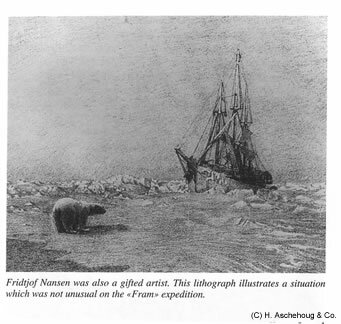|
 The professorship is named after Fridtjof Nansen (1861-1930) and is different from the Nansen Medal Dr. Nof received in 2005. The professorship is named after Fridtjof Nansen (1861-1930) and is different from the Nansen Medal Dr. Nof received in 2005.
Nansen was a scientist, explorer, author, athlete, statesman and a laureate of the Nobel Peace Prize. He is credited with the first observation (made from the vessel Fram) that ice packs drifted at approximately 30 degrees to the right of the wind direction. He correctly interpreted this as the effect of the earth's rotation and this laid the foundation for the mathematical solution later derived by Ekman. The solution - the Ekman spiral - describes the turning of the velocity vector with depth and is the foundation of modern wind-driven ocean circulation.
Nansen was also the first to cross Greenland on skis. Although he initially declined to participate in efforts to install him as the Norwegian prime minister, he later used his heroic national and international reputation to become a diplomat and advance the cause of refugees worldwide. He received the Nobel Prize for Humanitarian Activities in 1922.
|

